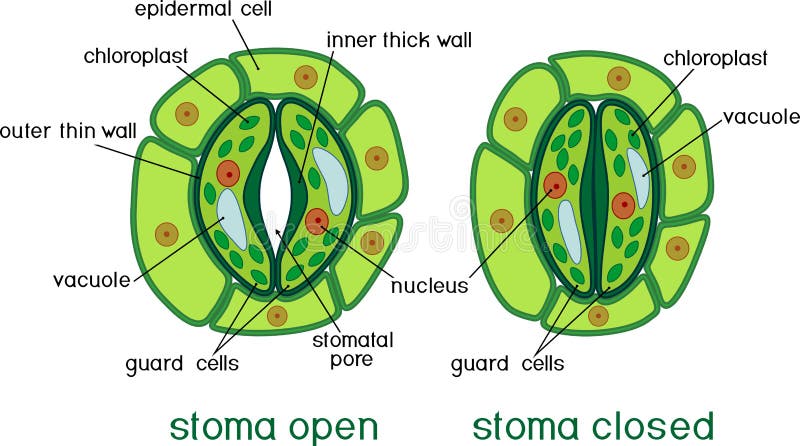Structure of Stomata
What are Stomata?
When a leaf is examined under the microscope, we observe many tiny pores, which are collectively called stomata.
Stomata are the minute openings, generally found in the epidermis of leaves. They are typically found in plant leaves and can also be found in stems and other parts of plants. Stomata play an important role by permitting the movement of gases such as oxygen, carbon dioxide, and water vapour to diffuse between the interior and outer surface of the plant tissues.
Types of Stomata
There are different types of stomata and they are mainly classified based on their number and characteristics of the surrounding subsidiary cells. Listed below are the different types of stomata.
Anomocytic Stomata
They are surrounded by the epidermal cells, which have a fixed shape and size. The stoma appears to be embedded in epidermal cells. There is no definite number and arrangement of cells surrounding the stoma.
Anisocytic Stomata
Each stoma is surrounded by unequal sized three subsidiary cells. Among which, one is distinctly smaller in size than the other two.
Diacytic Stomata
The stomata are surrounded by a pair of subsidiary cells that are perpendicular to the guard cells
Paracytic Stomata
The stomata are continuously surrounded by two subsidiaries, which are arranged parallel to the stomatal pore and the guard cells.
Gramineous Stomata
Each stoma possesses two guard cells, which are shaped like dumbbells. The subsidiary cells are parallel to the guard cells. The guard cells are found narrow in the middle and wider at the ends.

The stomata consist of minute pores called stoma surrounded by a pair of guard cells. This stoma functions as a turgor, an operated valve which functions by opening and closing according to the turgidity of guard cells. The cell wall surrounding the stoma is tough, flexible and thinner. The shape of guard cells usually differs in both monocots and dicots, though the mechanism continues to be the same.
The Guard cells are specialized, bean-shaped cells, which are found surrounding the stoma and are connected at both ends. These cells enlarge and contract to open and close the stomata pores. Guard cells also contain chloroplasts, the light-capturing organelles in plants.
The subsidiary cells, also called accessory cells. They are the accessory cells to guard cells and are found in the epidermis of plants. These cells are surrounded and supported by the guard cells and act as a buffer between guard cells and epidermal cells, which function by protecting epidermal cells against the expansions of the guard cells.
Functions of Stomata
The main functions of stomata are:
- Helps in the exchange of gases by opening and closing the pores in the leaves.
- It helps to expel the excess water out from the leaves in the form of water vapour.
- Based on the weather conditions, it closes or opens its pores to maintain the moisture balance.
- Allows the uptake of carbon dioxide and to give out oxygen during the process of photosynthesis.
- Stomata remain open during the day and closed at night. This closure prevents water from escaping through open pores.
Comments
Post a Comment